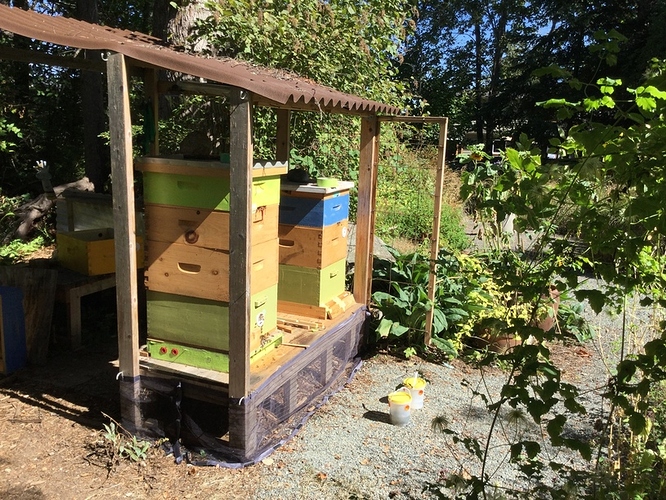Our honey bees have been a big part of our lives and garden for a number of years. They are fascinating creatures with an incredible social structure where everyone has a role to play to protect the queen, feed the larvae and to produce honey to feed the hive over the winter. Although it’s hard to give all 50.000 bees in one hive (!) a name, we do feel personally attached and feel a great sense of loss when we lose a hive through the winter.
Our garden is filled with plants that we know the bees, and other pollinators, like because they provide pollen and nectar. Later in the summer is a challenging time for bees to find food, so they are fed sugar water, but we also make sure that we have a lot of late flowering perennials. Pericaria amplexicaulis is presently teeming with bees, so is calamintha nepeta; macleya (plume poppy) which is finished blooming now, is their favourite flower from about 8 to 9 in the morning on sunny days. It’s amazing what we are discovering in terms of what plants make our bees happy.
As you can well imagine our bees do require ongoing attention and the right environment. What they give back to us is awe, amazement and some honey if they have enough for the winter.
11 Likes
Beautiful boxes too. How long have you been keeping bees?
For about 5 years. My partner does the bees, I do the garden
I recently noticed that we have two seemingly different types of honeybees that come to our flowers. One has an abdomen that is mostly golden coloured with narrow, dark stripes and a dark tip. The other has the reverse colouration: an abdomen that is much darker with pale stripes. I have wondered whether they would share a hive or be in different hives.
That’s a great question. They could very well be from the same hive. The diverse background of the queen and the fact she mated with a variety of drones results in different traits in her off spring
1 Like
